The Nest is a project designed for the city of Accra, Ghana. The Site is located in close proximity to the lagoon and the sea. The design caters to public interventions like open markets, observatories, and residential units for the fishermen’s community. The goal with the design is to highlight the traditional techniques and materials used in Ghana and adapt them to the location, making it efficient and sustainable for the place and the people.
The concept draws inspiration from the exemplary indigenous architecture of Ghana and looks into design principles and ideologies to see how they can be retrofitted and adapted to a large-scale project such as the Nest. The design revolves around the idea of Natural Ventilation and Passive Architecture.
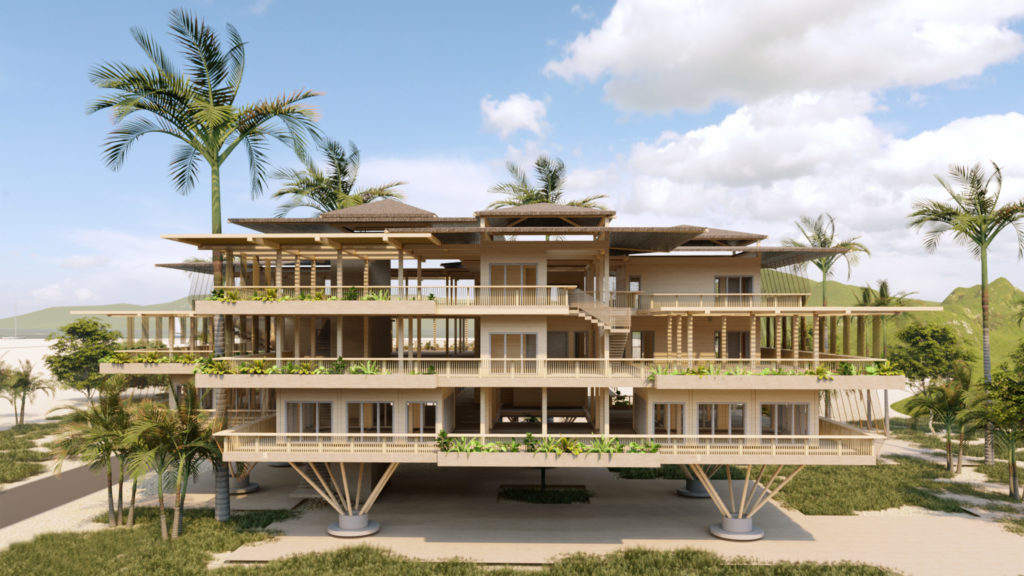
SPACE COHERENCE & INTERACTIONS WITH THE STRUCTURE SHOWING THE INTERSECTION BETWEEN PROGRAM & CONTEXT:
The structural systems chosen were decided upon not only for technical reasons but also to create unique experiences through the design allowing for an interactive and stimulative experience for the users. The structural system is designed to be showcased in the final structure and creates an intriguing play on the quality of spaces.
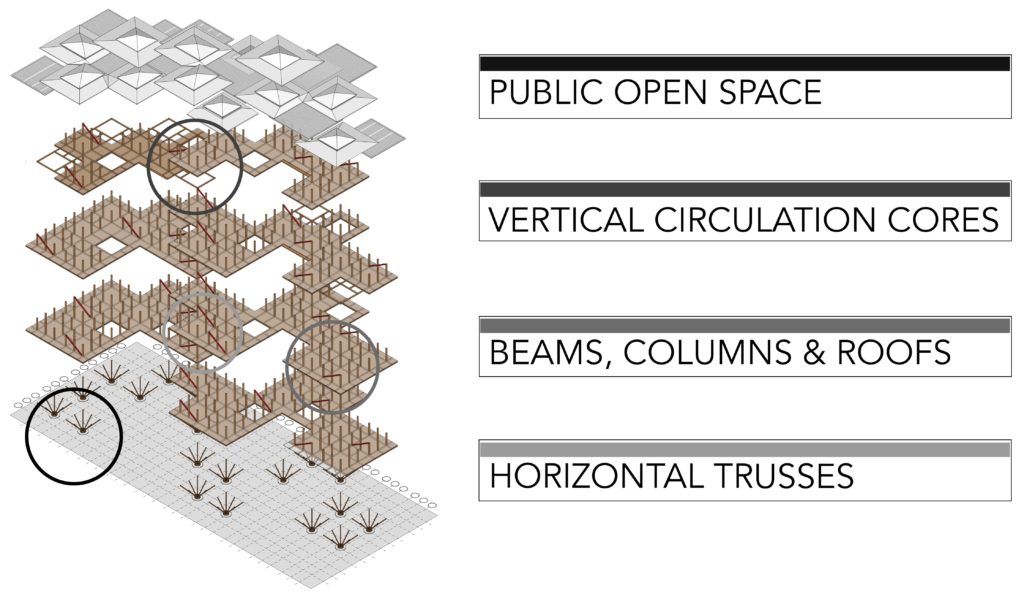
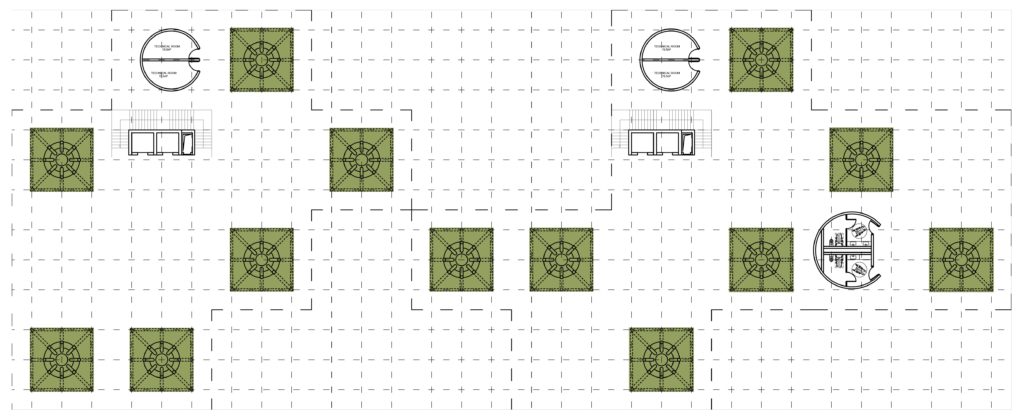
GROUND FLOOR:
The Tree columns are designed keeping in mind the Public Aspects of the ground floor. To allow for more open spaces and circulations the Column grid tappers create a tree column which also provides seating around each column. These areas will be used for the Open Market Spaces, Transitory Spaces, Green Spaces and Promenades.
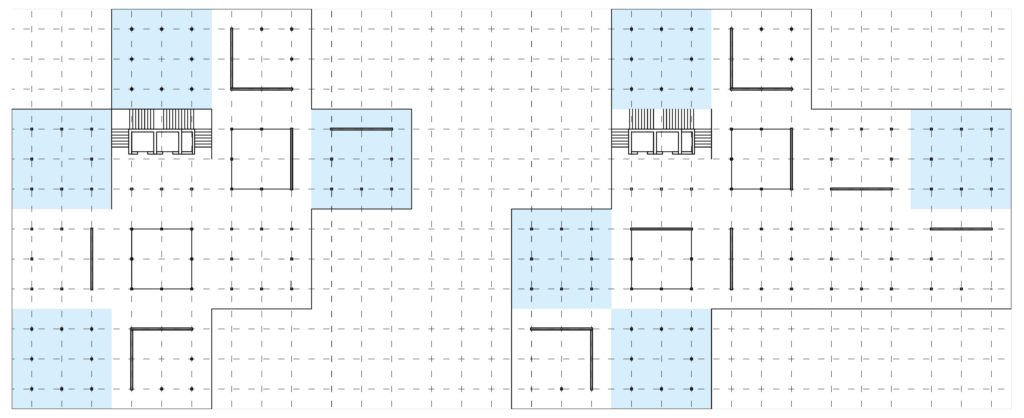
BEAM, COLUMN & ROOF GRID:
The beam column grid is designed to create a structural loop. All the floors are designed too have the same grid pattern followed. The columns are placed on a 3M x 3M grid these are concealed into the walls in the residential and office units and are exposed in the public and semi public spaces.
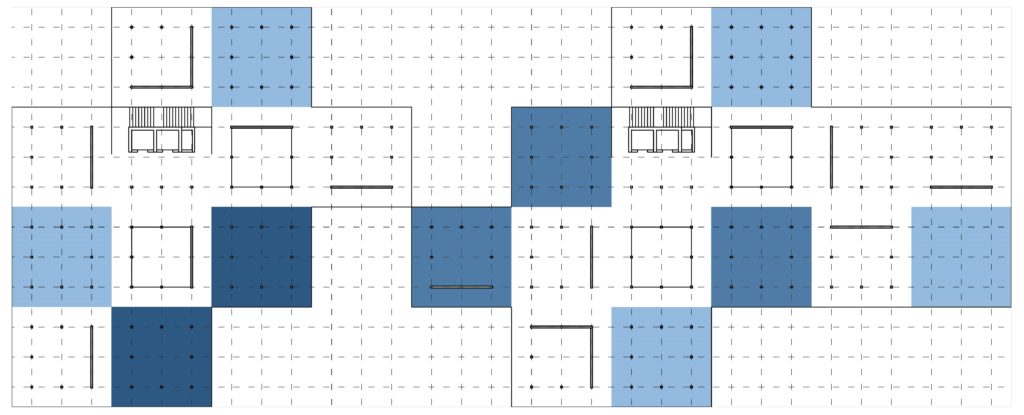
VERTICAL CIRCULATION CORES:
The Circulation Core is designed to be the anchor to the structure and provides both lateral and vertical load support. The core is the primary reason that the structure can have large spans and aids the tree columns in the division of loads from the superstructure down to the sub-structure. The core houses the Elevators, the Staircase and a few of the Services. The core is responsible for ensuring that the structure does not experience torsion.
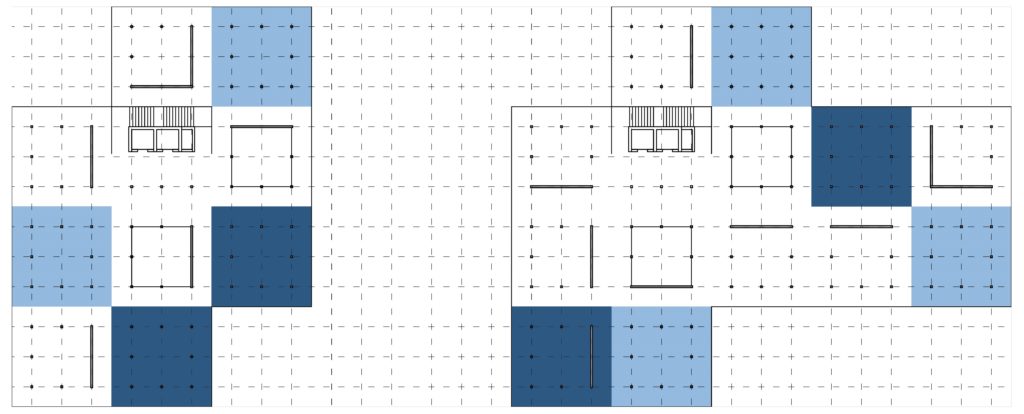
HORIZONTAL TRUSSES:
The design focuses on highlighting the horizontality of the slabs. Hence the design tries to avoid a strong vertical member to prevent torsion or lateral loads. To combat these forces the structural system is designed to create a truss that is only visible in elevation, this ensures that no single space is dominated by the visual weight of a truss. The diagonal members of the truss are scattered along different vertical planes along the floor plate. The same takes place across all floor plates creating trusses that can provide the required stability to prevent torsion and forces acting in the lateral direction.
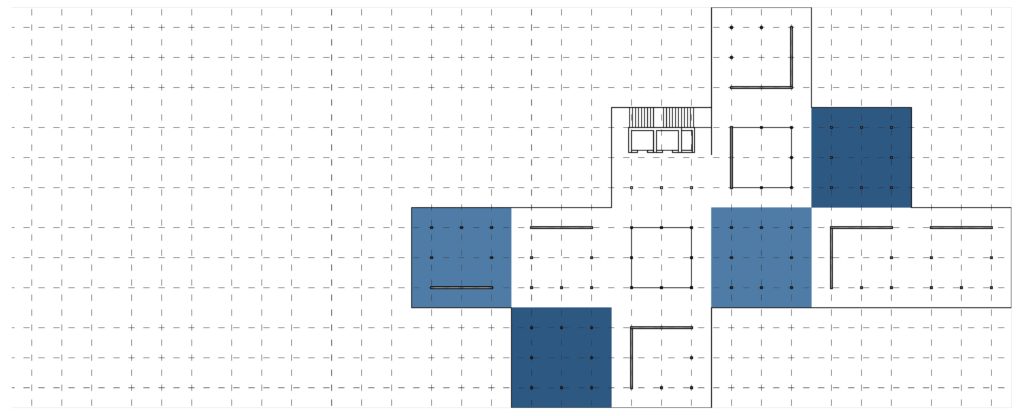
TOPOLOGICAL NOTIONS OF THE STRUCTURE:
The structural system helps with the transfer of loads down to the foundation. This is shown visually through the diagram showing the load transfers and how the different structural systems work coherently to create a single structure.
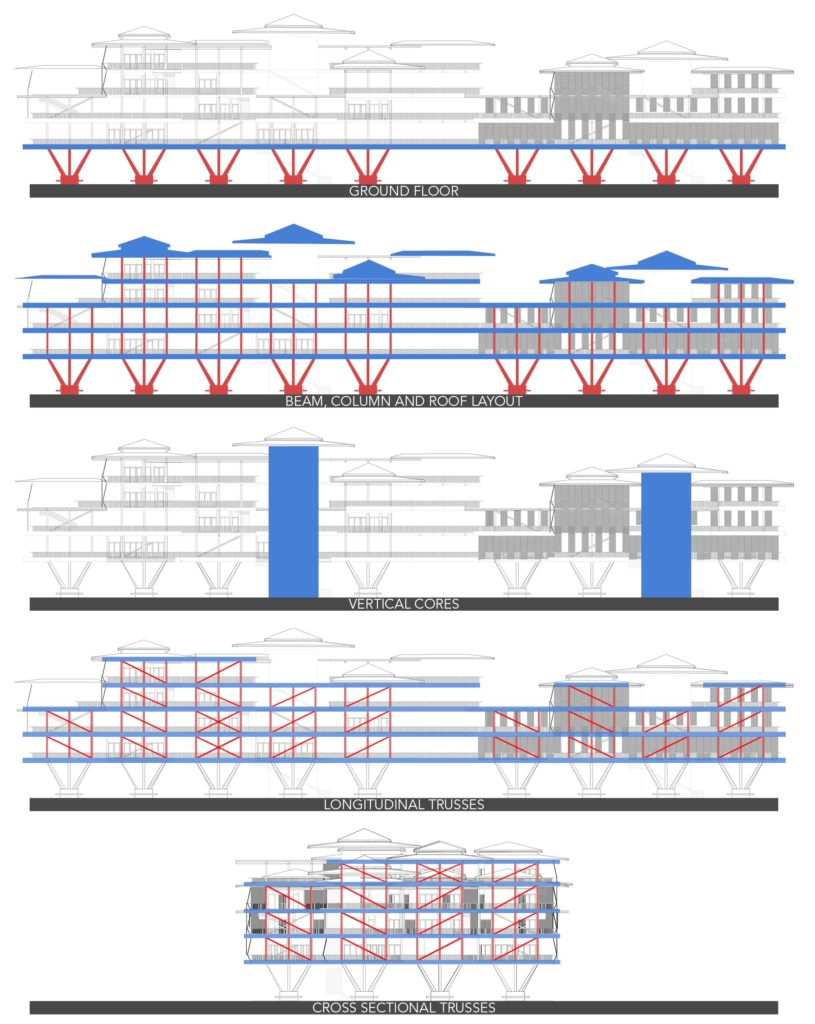
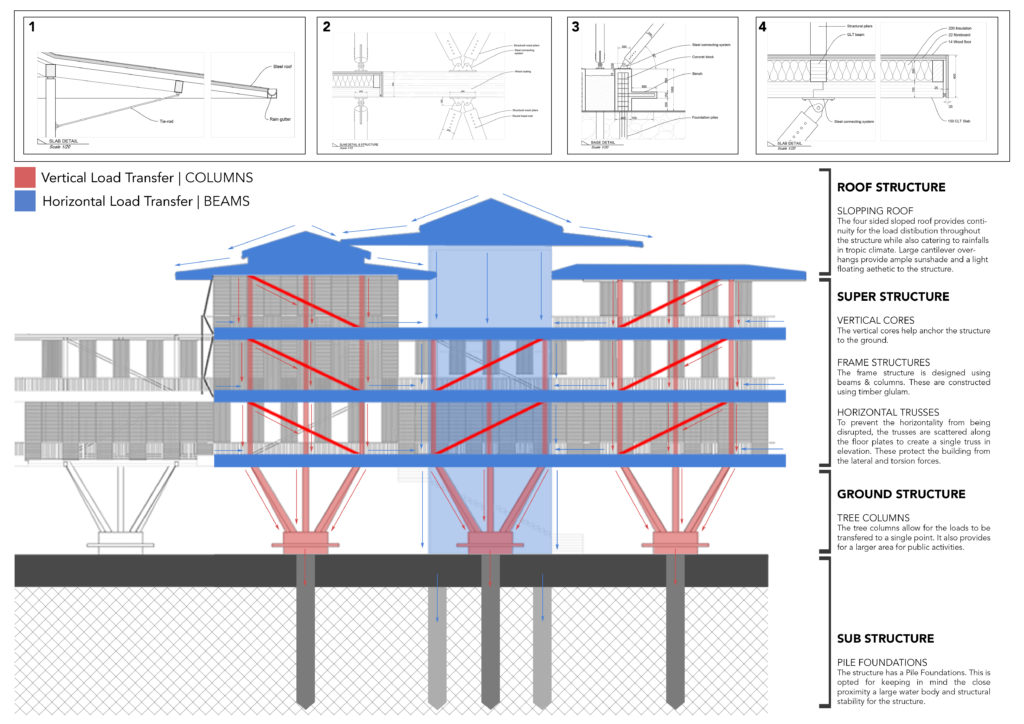
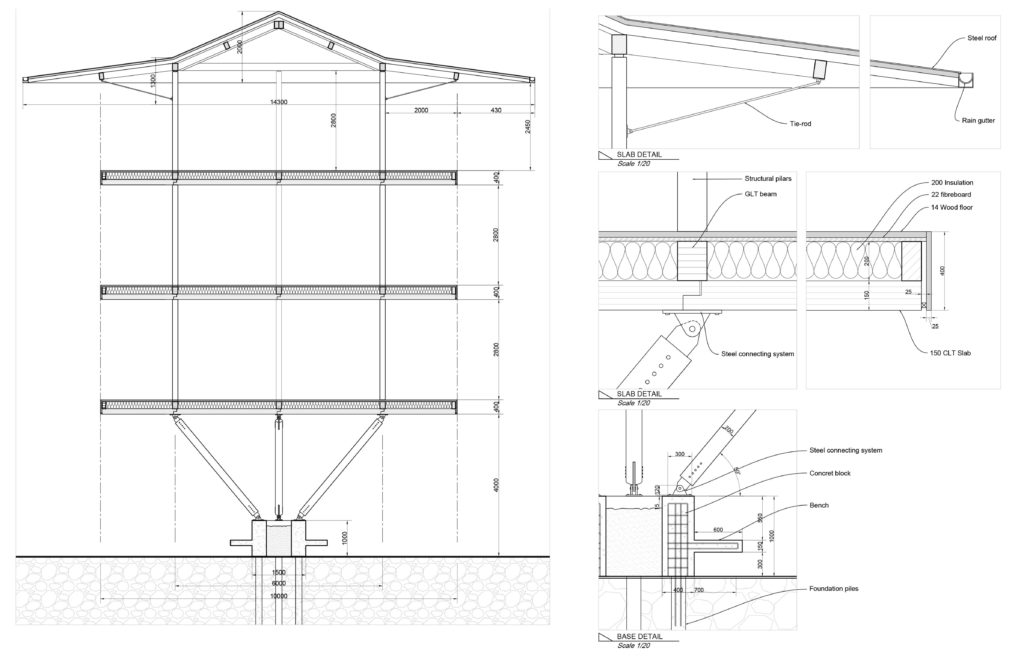
ALGORITHMIC UNDERSTANDING OF THE STRUCTURE THROUGH A KIT OF PARTS:
To aid the buildability of the design, the structural system is designed using a kit of parts. All columns of the same height and a set of 8 types of beams that when combined create the different orientations for the design. Both the Beams and the Columns will be Glulam Timber Members.
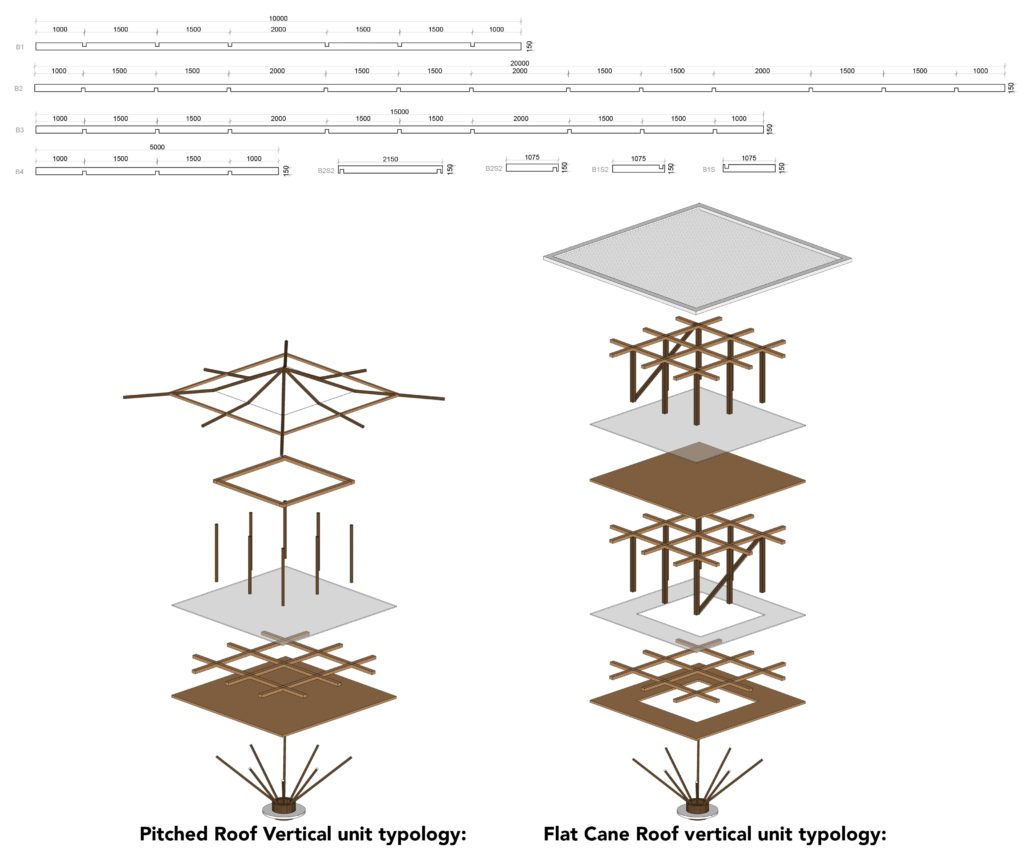
STRUCTURAL COMPONENTS & ASSEMBLY:
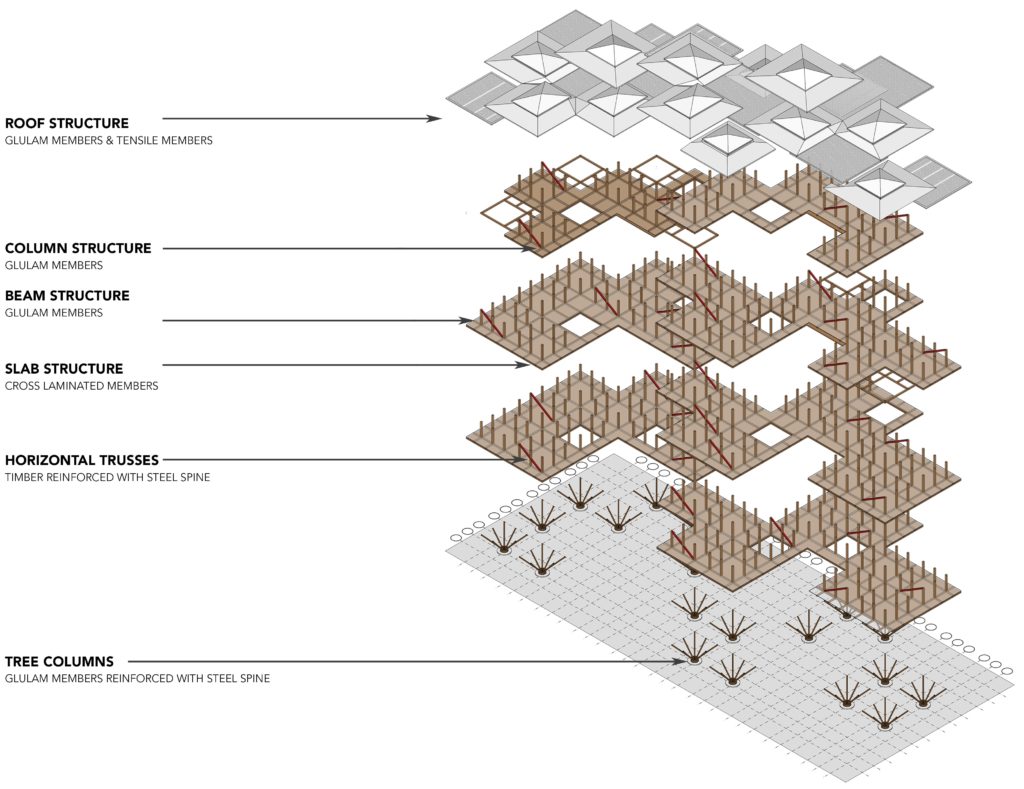
SEQUENCE OF CONSTRUCTION FOR THE STRUCTURE:
The design draws on traditional knowledge and modern techniques to create a space that is enthralling and experiential for its permanent users and the floating users. The structure is designed to be ecologically designed keeping in mind the values of the region and the immediate microenvironment. The structural system reflects the importance of working hand in hand with the design and creates interaction between users and structures, making it an Eco-systemic Structure.

